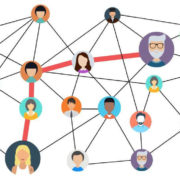Trends That Will Reshape Customer Service
Customer service has stopped being static a long time ago. Mobile phones have replaced landlines. Email edged out phones. To keep existing customers and attract new ones, you need cutting-edge customer service. For example, customers are four times more likely to make a purchase from a competitor after they have a problem that has not been addressed by the service system this according to research done by Bain & Company. However, customer-service overhauls aren’t cheap. In order to keep customers happy and customer service in tip-top shape companies will have to keep a close eye on some of the predicted trends for the next 5 years.
Over the past several years, boosting the customer service experience has caught and held businesses’ attention. After all, good customer service is the deciding factor in sales growth. This focus shift has resulted in a huge turnaround for companies once plagued by bad reputations and the less-than-stellar bottom line to prove it.
Successful organisations have put in work to meet and exceed customer demands, improve relationships, and deliver satisfaction all while maintaining requisite productivity and quality levels. Competitors are paying attention and upping their game accordingly.
For winning companies, their success comes down to software and tool investments as well as improved website functionality and the addition of staff members focused on optimised customer engagement.
The following lists the top five innovations in customer service those winning brands are adopting.
1. Social media are becoming mainstream channels
Thanks to an increase in on-demand video content in their personal lives, customers are more frequently asking for the same in the business world. As a result, more companies are doing less telling through text and more showing through interactive guides and customer service video content to get messages across.
Just 13% of consumers over the age of 55 have used social media for customer service purposes, a Microsoft study has revealed. On the other hand, 55% of people aged between 18 and 34 have reached companies at their social media accounts. Given the fact that millennials and generation Z make up a larger share of the existing market, social-media outreach is likely to make up more than half of your customer service requests.
It already is too late to put a social-media intern in charge of your Twitter account because it will no longer cut it. People who are running your social accounts have to understand the product or service like veteran members of your customer service staff. The use of chatbots to field common questions is easily doable, freeing up time for your human service people to tackle more complex ones.
2. Automation will become more and more personal
Automation and AI are hot topics in every sector, and customer service is no exception, but when customers hear “customer-service automation,” they think of automated menus and robocalls. From the user’s perspective, that sort of automation is worse than none at all.
Used well, customer-service software can lighten an agent’s load without erasing the human touch. Contact centre software provider Five9 suggests agents use real-time transcription services, which can achieve 95% accuracy with custom tuning, so they can focus more on the customer and less on transcription errors. Automation will be a must, but it’s best used to develop human workers. Having only basic chat on your website was becoming outdated last year and moving into 2019 it’s even worse. Customers increasingly expect chat solutions to be incredibly fluid, switching between various communication mediums (text, video, screen sharing) as needed on the fly without being forced to change applications or start over.
Modern service software now leverages the true power of AI, nothing related to simplistic chatbots that lure in customers. These solutions are incorporating AI from the ground up not to stand on its own as a replacement for human agents, but to aid them in working smarter and more efficiently. Examples include sentiment analysis, predictive chat, and distress scoring.
3. Customer-service training will become companywide
Employees like engineers and marketers may not interact directly with customers, but they need to incorporate customer-service skills all the same. The reason is the rising importance of your UX. To deliver a better experience, everyone needs to know common customer pain points and solutions. Encourage people to think beyond their immediate role and subject area. Marketing software firm HubSpot trained its content team not just on marketing or writing, but also on how to represent the company online. Ensure everyone knows how to refer to your product and brand. Develop a “top 10” list explaining how to address common customer questions.
4. Customer Agents will become more knowledgeable
It used to be that agents were hired based on their expertise in one particular customer service channel. For example, those with awesome call centre skills were placed accordingly while savvy communicators manned the chat channel.
Customer care agents today are crossed-trained for expertise in all customer engagement mediums including social media, email, chat, phone and text. Businesses benefit from this skillset flexibility by using and moving agents to serve customers no matter what their preferred mode of communication is.
“Customer success” stories will become the norm
More companies are beginning to understand that customer service is more than just reading scripted responses and working on a ticket queue. It’s about doing anything and everything possible so your customers are successful with your business. This mentality is leading to a rise in “customer success” within companies that dedicate the time and resources necessary to keep customers happy. The new emphasis on the customer has also led to reduced churn and more positive third-party feedback.
No matter if your organization is just embarking on your optimized customer experience journey, or continuing on a well-established path with added innovations, today’s marketing landscape more than indicates exactly how and why being customer-centric is necessary for company survival and success.
There is a real value in providing companies with the tools to carry out regular organisational assessments and this is where Great People Inside comes to your aid. Our online platform offers the best solutions and tools for your company to thrive in every type of industry and any possible situation your organisation may find itself. In terms of lowering your employee turnover rates, we recommend our GR8 Full Spectrum assessment for hiring and 360° Survey for retention. Finding the right talent, the best fit for the job and your organisation can be a very challenging task. It requires deep knowledge of your own organisation’s culture and a keen understanding of the candidate’s personality, strengths, interests, work style and other characteristics. Our technology and solutions will do the work for you, helping you find employees who can flourish and reach the highest performance required to constantly bring your company forward.
Request a free demo:
Sources:
https://www.business2community.com/trends-news/5-customer-service-trends-to-watch-for-in-2019-and-beyond-02225441
https://www.teamsupport.com/blog/trends-customer-service-2019
https://www.entrepreneur.com/article/343367











